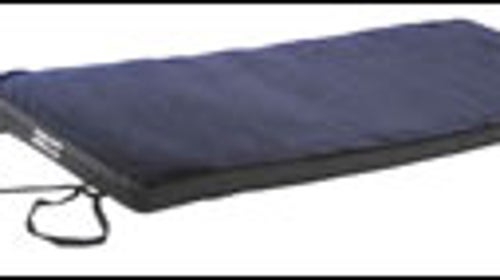If you’re not planning on carrying it, a wide sleeping pad is pretty easy to find. The Therm-a-Rest DreamTime pad ($175; www.thermarest.com) is about as wide and cushy as it gets—25 inches wide, with a thick foam cushion and plush fleece pillow-style top. Trouble is, this monster weighs nearly seven pounds. So it’s strictly for car camping, or perhaps boating, where weight and bulk aren’t a big issue.
 DreamTime
DreamTime
It gets trickier when the pad goes into a pack. The widest trail-model pad that Cascade Designs makes in its Therm-a-Rest line is the Trail Comfort pad ($70), which at 20 inches is fairly wide. Ditto for the Big Agnes REM pad ($75; www.bigagnes.com), which is a very nice, comfortable pad. Big Agnes also offers a 25-inch version of its super-comfortable Insulated Air Core Pads (available from the beginning of next month), which are not self-inflating but are filled with synthetic insulation. You blow them up, and have the benefit of a very soft, and warm, pad. The 25-inch-wide model is $100, and at two pounds of weight doesn’t extract too much of a luggage penalty.
Otherwise, solutions are a bit tricky to come by, as 20 inches is the standard width for nearly all pads on the market. And I agree that using two isn’t a good option—in addition to the weight, you’ll always be sleeping on a gap, so no comfort there! What you might consider is having some Ensolite insulation (the blue stuff) custom-cut to, say, 28 inches in width. Put that under your regular sleeping pad. Then, when a stray limb or hip inches off the main pad, it’ll still find some insulation, rather than the cold, cold ground…


